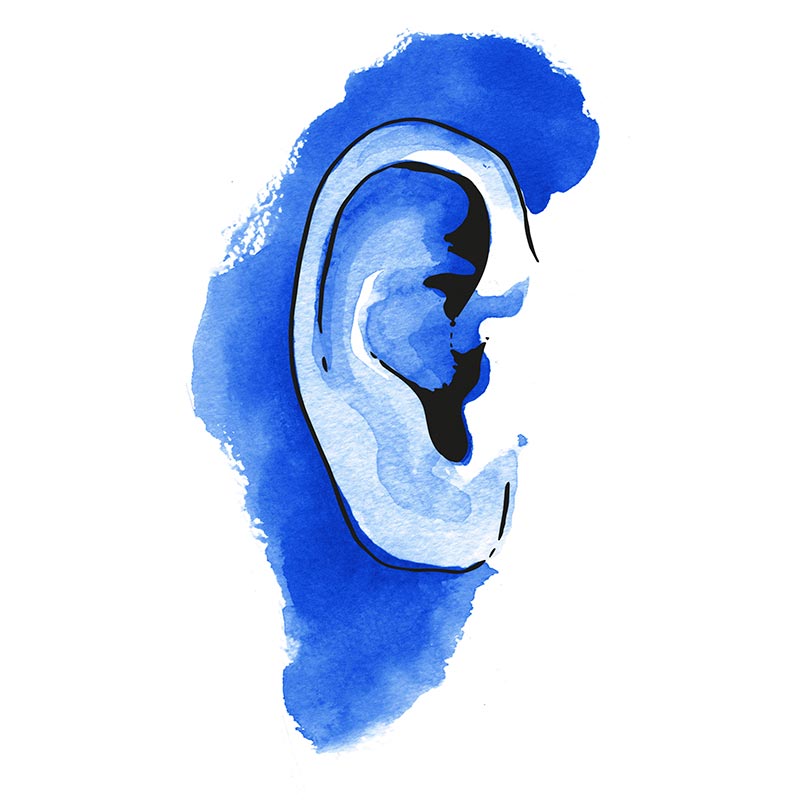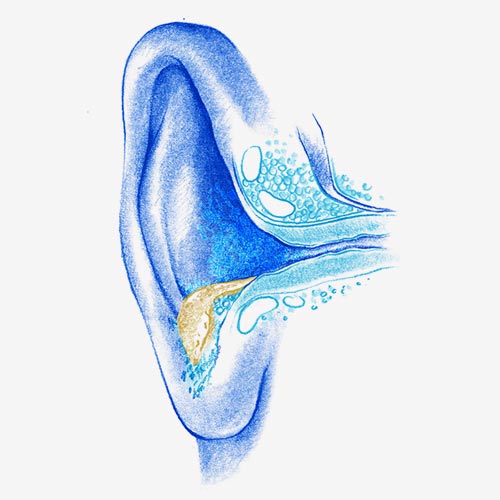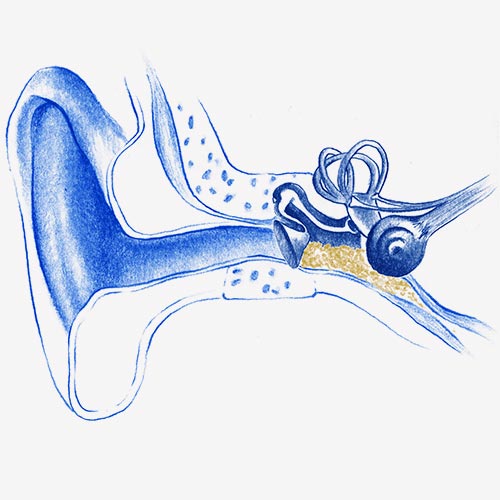Dr. Hernández Rubiño, Antonio
Otorrinolaringología
Jefe del servicio
Especialista en otología

Otology is the ENT subspeciality dealing with the anatomy, physiology and diseases of the ear.
These conditions can cause infections, hearing loss, hypersensitivity to “normal” environmental sounds…
Among the most frequent problems are:
Otitis is an inflammation of the ear, most of the time it is as a result of infection. It may only be in the outermost part (external auditory canal) or the middle ear.

This is an infection of the skin of the external auditory canal, germs enter from outside. It is quite common in children during the summer months due to water entering whilst swimming in the pool or the sea increasing humidity and the proliferation of bacteria, the most common one being Pseudomonas aeruginosa.

This is a frequent complication of colds, so more common in winter.
The bacteria come from inside the nose or mouth, the most common being Streptococcus pneumoniae and Haemophilus influenzae, less common being Branhamella catarrhalis, Streptococcus group A and Staphylococcus aureus. Viruses such as Respiratory Syncytial Virus, rhinovirus and adenovirus (all responsible for the common cold) or the influenza virus (flu) may also be involved.
When starting with a cold, mucus accumulates in the middle ear, facilitating the growth of bacteria.
If a lot of mucus builds up, due to high pressure, the eardrum becomes perforated and mucus escapes to the outside (Suppurative Otitis Media).
Degrees of hearing loss:
Mild: difficulty hearing soft sounds and following conversations with a lot of background noise.
Moderate. Difficulty hearing loud, and soft sounds. When there is background noise, it is hard to understand the conversations.
Severe: To follow a conversation, speech must be very loud.
Profound: Communication is impossible without the help of a hearing aid or implant.
There are three types of hearing loss:
Dr. Hernández Rubiño, Antonio
Otorrinolaringología
Jefe del servicio
Especialista en otología
Dr. Tenor Serrano, Rafael
Otorrinolaringología
Especialista en cabeza y cuello
Apnea del sueño
Dr. Chiti-Batelli, Sandro
Otorrinolaringología
Especialista en rinología
Rinoplastia estética y funcional
Dr. Rosas Marqués, Paloma
Audiometrías y pruebas funcionales
Online appointment and download of test results through My HC.
Tel.: +34 952 908 628
952908898 Oncology
951829978 Diagnosis by imaging
951829947 Gynecology
952908897 Fertility
951829947 Physiotherapy